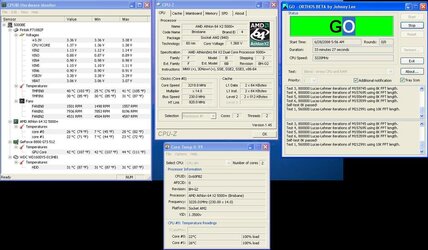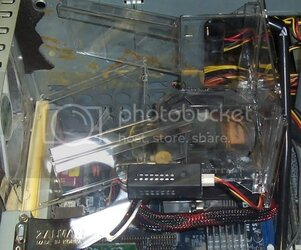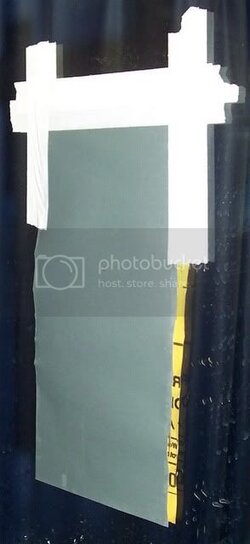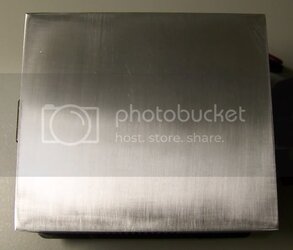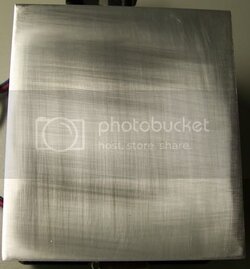1Time,
Nice shots of the lapping.
As far as the rounded corners/edges go, that is an indication your sand paper is not truly flat or the paper is a bit loose, as the sandpaper gets wet, it can 'ridge up' a bit on the leading edge when actually performing the lapping sequence, thus leaving the rounded edges as shown with your pics.
it probably will not adversely affect temps, just pointing it out to you.
when I lap, I spend maybe 5 minutes or less and I am done, I stop @400 grit....most of the time, the CPU's are a bit concave, I found that all you have to do is barely take the edges down and you reach flat, did the same for my waterblock...on my opty 165 you can see a small amount copper at the edges, but the center is still silver colored and you can just make out the stepping and codes dates we all cherish so much when figuring out which slugs are the best....
anyway, back on subject, I stopped because my straigthedge indicated FLAT, flat contact, whether the surfaces are shiney or dull will give you the BEST heat transfer with proper application of thermal paste.
i commend those who go to all the way to mirror finish, it does look nice, whether the added effort is worth it is up to the user...
laterzzzz................
